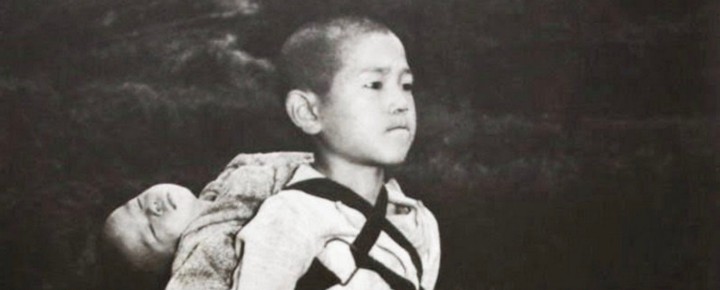 ome photos are simply worth thousands of libraries put together as they can sum up a whole event or even a generation that has seen the good as well as the bad. This is one of the photos that really show how a child reaches the peaks of human emotional limits without even knowing well what emotions are. There is some interesting as well as a very sad story behind the picture, which we shall dwell into.
ome photos are simply worth thousands of libraries put together as they can sum up a whole event or even a generation that has seen the good as well as the bad. This is one of the photos that really show how a child reaches the peaks of human emotional limits without even knowing well what emotions are. There is some interesting as well as a very sad story behind the picture, which we shall dwell into.
Hiroshima and Nagasaki aftermath
In August 1945 there were two major attacks from the United States Army on the Japanese nation that would bring the end of World War II as well as the end of the conflict between these two nations. To be more exact, on the 6th of August the first nuclear bomb was launched onto Hiroshima and the second was launched on the 9th of August onto Nagasaki.
The world was somewhat shocked, but nothing compared to those who witnessed the nuclear blast whilst not only being emotionally affected by the loss of their homes but most importantly the loss of their loved ones in a matter of seconds. War is hell and there are no rules in war such as crossing a certain line, but this time the line wasn’t crossed, it was wiped out of existence by these two nuclear bombs.
So much so that on the 2nd of September Japan surrendered and even signed their surrender on the USS Missouri battleship. Japan did not only take one of the biggest moral hits in history but their army was simply crumbled by the US Navy in the last two years of war.
It is estimated that the nuclear bomb launched on Hiroshima killed around 160,000 people and the one which hit Nagasaki was around 80,000. Only half of the numbers presented died on impact, with the other half following a painful death that lasted from days to even months in some rarer cases.
After Japan signed its surrender, the US Army sent a photographer to take photos of the aftermath of both Hiroshima and Nagasaki. The photographer assigned for this mission was Joe O’Donnel. For seven long and depressing months, Joe went around the two cities to document the damage done by the two nuclear bombs. He was surprised to see that most of the casualties that had been hit by the bombs were civilians.
Joe described that for those seven months, he only saw death, pain, and suffering which no human should witness. He took many photos of buildings that have been demolished by the nuclear blast, buildings being reconstructed, bodies being recovered from rubbles, and many others. But one picture had received special attention around the world from the collection of photographs taken by Joe.
The strength of Japan after the war
That picture is of an unknown boy (to this day no records have been found to identify him) who is standing in the line at the crematorium with his dead little brother strapped to his back. His stoic-like posture just shows the strength of this little boy considered to be around the age of 10 showed, portraying to the rest of the world the strength Japan had to have in order to recover from such a huge blow.

Joe explains that the boy waited without crying or making any other gestures until his turn came to give his little brother to the crematorium staff. Whilst seeing the corpse of his brother burn, he was biting his lower lip so hard that he started bleeding whilst having the attention stance of a soldier. Once the corpse of this little brother was turned into ashes, he turned around and left.
The photo is extremely emotional as it portrays a child that most probably lost everything, including his home as well as all his family members. Where do you go or what do you do when you lose everything as a 10-year-old? Most adults cannot portray the emotional strength that this child showed.
It has such a huge emotional charge that it actually became a symbol of unity in Japan. When he encountered a group of soldiers, one of them told him to throw away his dead brother as he was only dead weight, and the little boy replied:
He’s not heavy, he’s my brother!
The soldier understood and broke down in tears.
Since then, this image has become a symbol of unity in Japan.
Let this be our motto:
“He’s not heavy. He’s my brother… She’s my sister.”
If he falls, raise him.
Even if you get tired, help him,
And if his support is weak,
And if he makes a mistake, forgive him
And if the world abandons him, carry him on your back, because he is not heavy
he is your brother…
This photo reflects the spirit of a defeated nation that stood strong even against the smallest odds, accepting their defeat with no humiliation.
Avid Writer with invaluable knowledge of Humanity!
Upcoming historian with over 30 million views online.
“You make your own life.”





